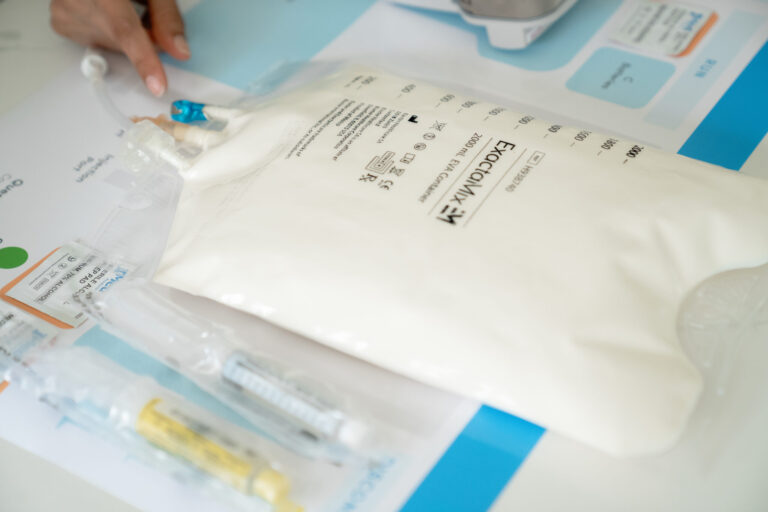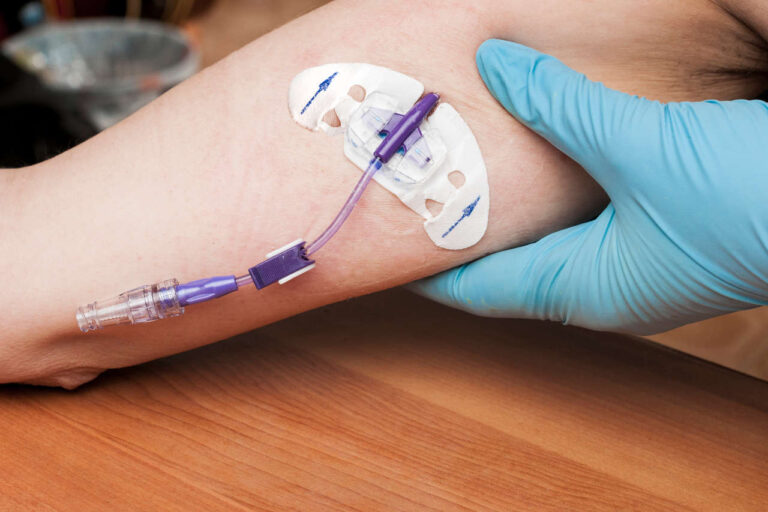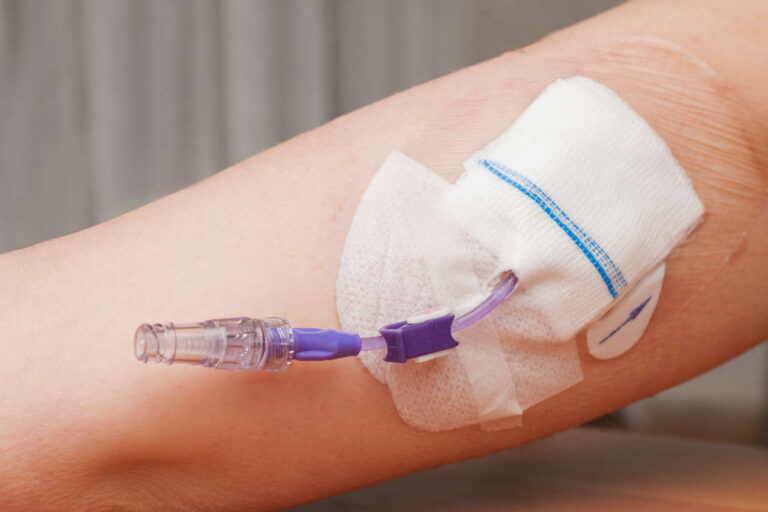
循环性ITP438T疗法也称为间歇性ITP438T疗法、非连续性ITP438T疗法或夜间循环性ITP438T疗法。这种方法允许患者在白天或夜间较短的时间内(通常为8至18小时)接受静脉营养液治疗,而不是标准的24小时。该技术最早于20世纪70年代报道,旨在简化患者的长期ITP438T疗法。
通常情况下, TPN 初始输注为24小时,这对住院患者有益。然而,对于病情稳定且需要在家中长期输注TPN的患者来说,进行其他活动会变得困难。
您的静脉输液随时可用
库存齐全,访问无忧为了改善患者的社交活动和生活质量,医护人员通常会将患者过渡到周期性TPN输液。这项技术允许患者在白天进行其他活动,而无需整天持续连接到TPN输液器。
在本文中,我们解释了循环 TPN 与连续 TPN 的区别以及与之相关的潜在优势和问题。
连续 TPN 与循环 TPN
如前所述,对于危重患者或需要短期TPN治疗的患者,通常以24小时持续输注的方式给予TPN。相反,对于需要在家中长期使用TPN的患者,则以单次8至18小时输注的方式给予周期性TPN(持续时间可能为8至23小时,具体取决于医疗需求)。
以下是循环 TPN 与连续 TPN 的主要区别特征:
- 与 24 小时内持续输注的 TPN 不同,周期性 TPN 需要每天开始和停止输注,让身体有时间适应血液营养的变化。
- 循环 TPN 需要在较短的时间内注入更高速率的营养物质,以便注入的营养物质负荷与连续 TPN 提供的营养物质负荷相似。
- 循环 TPN 允许患者在白天与输液设备断开连接,而在连续 TPN 中,患者白天和晚上都与 TPN 设备保持连接。
循环 TPN 的潜在优势

有几个好处 适用于需要在家中长期输注 TPN 的患者。
它提供舒适和独立
其中一个主要好处是 舒适和独立 患者数量. 循环输注 TPN 允许患者每天在白天或夜间的部分时间接受 TPN 输注,持续 8 至 18 小时。大多数情况下,患者在夜间休息或睡眠时服用 TPN。这有助于他们积极参与白天的活动,例如往返学校、购物和参加社交活动,而不必整天或整夜被 TPN 输液管和泵装置束缚。
简而言之,循环 TPN 有助于恢复日常生活的正常感。
它可以减少长期服用 TPN 的副作用
与连续 TPN 不同,循环 TPN 可最大限度地减少不利影响或 并发症 长期服用TPN在一定程度上与此相关。肝功能障碍或恶化是长期服用TPN最常见的不良反应之一。
在20%至80%病例中,长期服用TPN会导致肝功能改变,例如在TPN治疗的第一周内肝酶活性升高。此外,γ-谷氨酰转氨酶 (GGT)、天冬氨酸转氨酶 (AST)、碱性磷酸酶 (ALP) 和总胆红素 (TB) 水平升高会导致脂肪变性(肝脏脂肪堆积)。
如果未能成功治疗,脂肪变性随后会发展为纤维化和肝硬化。
然而,许多 研究 报道称,循环 TPN 降低肝功能障碍的可能性 通过将异常的AST、GGT和BT水平恢复到正常水平。循环TPN可以让肝脏得到休息,从而减轻压力并降低并发症的可能性。
它可以预防必需脂肪酸的缺乏
由于需要无脂或低脂饮食,部分患者面临更高的必需脂肪酸缺乏风险。持续性TPN基因突变会导致胰岛素持续分泌,从而限制脂肪组织中储存的必需脂肪酸的动员。相反,循环性TPN基因突变会限制胰岛素分泌,从而导致必需脂肪酸从脂肪组织释放到血液中。因此,它有助于逆转或治疗必需脂肪酸缺乏症。
然而,目前关于使用环状TPN治疗或预防必需脂肪酸缺乏症的研究有限,需要进行更多的研究来证实这一理论。
咨询 TPN 家庭输液
循环 TPN 的潜在问题
与循环TPN相关的主要问题之一是血糖水平波动。例如,突然开始静脉注射葡萄糖溶液可能导致高血糖症(高血糖),而停止静脉注射葡萄糖溶液可能导致 低血糖 (低血糖)。对于患有糖尿病等严重疾病的患者来说,这可能不是一个好的选择。
循环TPN治疗的另一个担忧是,它可能导致危重、使用呼吸机的患者产生大量二氧化碳。循环TPN治疗比持续TPN治疗更能增加能量消耗,从而导致氧气吸收量增加和二氧化碳排出量增加。
最后,与连续性 TPN 一样,如果不遵循正确的无菌技术和定期导管护理,周期性 TPN 也可能导致导管插入部位感染。
概括
对于需要长期输注 TPN 的病情稳定患者,周期性 TPN 疗法是一个不错的选择。与持续性 TPN 疗法相比,这种方法赋予患者自由和独立性,并改善其生活质量和社交活动。然而,在选择周期性 TPN 疗法之前,必须考虑一些潜在问题。
参考:
- Nghiem-Rao, TH、Cassidy, LD、Polzin, EM、Calkins, CM、Arca, MJ 和 Goday, PS (2013).外科新生儿预防性周期性肠外营养的风险与获益。 临床实践中的营养, 28(6), 745-752。https://doi.org/10.1177/0884533613502813
- Cober, MP, & Stout, SM (2011).循环肠外营养输注:临床医生的注意事项。 实用胃肠病学, 11.
- Lerebours, E., Colin, R., Hecketsweiler, B., & Matray, F. (1987).全肠外营养中血浆氨基酸的持续性和周期性肠外营养比较。 临床营养, 6(3), 143-149. https://doi.org/10.1016/0261-5614(87)90048-3
- Longhurst, C., Naumovski, L., Garcia-Careaga, M., & Kerner, J. (2003). 计算肠外营养周期的实用指南。 临床实践中的营养, 18(6), 517-520。https://doi.org/10.1177/0115426503018006517
- Collier, S., Crouch, J., Hendricks, K., & Caballero, B. (1994).6个月以下婴儿循环肠外营养的应用。 临床实践中的营养, 9(2), 65-68。https://doi.org/10.1177/011542659400900265












